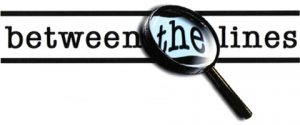
The conversation about masking in public schools at this week’s Maryland State Board of Education meeting was reflective of the general sentiments of society today. Nobody wants to wear a mask but currently they are needed until the protocols established by the authoritative bodies – like Maryland Department of Health and OSHA – are relaxed further.
In the case of schools currently, students wearing a mask deemed a close contact to a positive student will not have to quarantine so long as they remain asymptomatic and submit to testing. If the same student was not wearing a mask next to a positive, he or she would currently need to quarantine, no matter of vaccination status, testing or symptoms. The mask is more important than vaccination and testing. This topic and many others were discussed at length this week at the Maryland State Board of Education meeting.
In a 12-2 vote, the state board ordered the Maryland State Department of Education to create an emergency regulation to draft masking “off ramps” for state public schools. MSDE Superintendent Mohammed Choudhury said, “We can’t mask our children forever … I believe we can update our regs in a way that provides an off ramp for our communities based on where they are with vaccination rates … very important in all this is no single school should have to close because of COVID and quarantine should continue to be minimized. I don’t want to compromise on those as we move forward … The goal is create an off ramp.”
Once the state department presents the regulations, the board will vote on the changes at a future meeting. If the emergency regulations are reviewed and approved, the local jurisdictions will then be able to opt out of the state mandate under the outlined guidelines, which will likely be linked in some shape to vaccination rates, frequent rapid tests and local transmission rates at the time. The state’s masking mandate for schools expires in February. Until the regulations are reviewed and approved, the state’s mask mandate continues for now.
For the board’s edification, Choudhury reviewed a couple other states’ approaches to relaxing existing masking rules. He said Nevada is using the CDC transmission metric where any jurisdiction lower than “substantial” transmission spread can lift the mask mandate. For what it’s worth, in Maryland as of Nov. 30, there are no jurisdictions below substantial. Thirteen jurisdictions are classified as high (like Wicomico), while 11 are substantial (including Worcester). Additionally, he said Massachusetts is tying an easing of masking to vaccination rates of individual schools. He said schools with an 80% vaccination rate of staff and students can choose to lift masks if they choose in that northeast state. Anyone not vaccinated would need to mask in all efforts to ease mask requirements.
Though there is much work to be done by education and health officials, there does appear to be a consensus to provide opportunities for local school systems to return to optional masking. The key is going to be what baseline metrics will be used to determine eligibility. High vaccination rates seem to be a certain requirement. On the subject of local control, School Board President Clarence Crawford said, “I have no problem with local control but there needs to be a match of local control with accountability and responsibility. I am all in favor local control. I don’t think anyone wants face coverings … but sometimes in leadership you have to do what is necessary, not what you would like to do.”
My take is I don’t want my kids to wear facial coverings to school. However, I am more concerned about close contact quarantine time periods. Virtual learning and missing in-person school time upsets me more than asking children to wear masks. The state school system must convince health officials to lessen the importance of masks and place more stock in vaccination and testing.
x
x
Government has always competed with private enterprise on staffing, especially so in Ocean City where there are thousands of low-paying seasonal jobs at businesses and in the public sector. It’s why Ocean City’s decision to increase base wages is not big news. In fact, it’s the obvious and only reaction to staffing woes of recent seasons. The only matter making it news is it will cost the city about $800,000 a year to increase these starting hourly rates to the $15 an hour minimum wage and other salary table adjustments.
The city’s move will not likely have a huge impact on hiring next summer. Most private businesses are already offering far above the $15/hour minimum wage rate for lower level employees. It was common to see restaurants offering $18 to $20 an hour for dishwashers last summer. One hotel advertised last summer it would pay housekeepers $20 per hour and give a $1,000 bonus to those staying until Sept. 1 and more for Oct. 1. These sorts of creative offers confirmed the desperation. Many local business owners have been working on competitive packages to offer prospective employees in the spring to try and lock in staff early before the season. One package I saw this week was geared toward college-age applicants, offering a signing bonus for a mid-April commitment, a mid-season bonus and a late season retention perk involving funding the fuel needed to travel to and from college.

